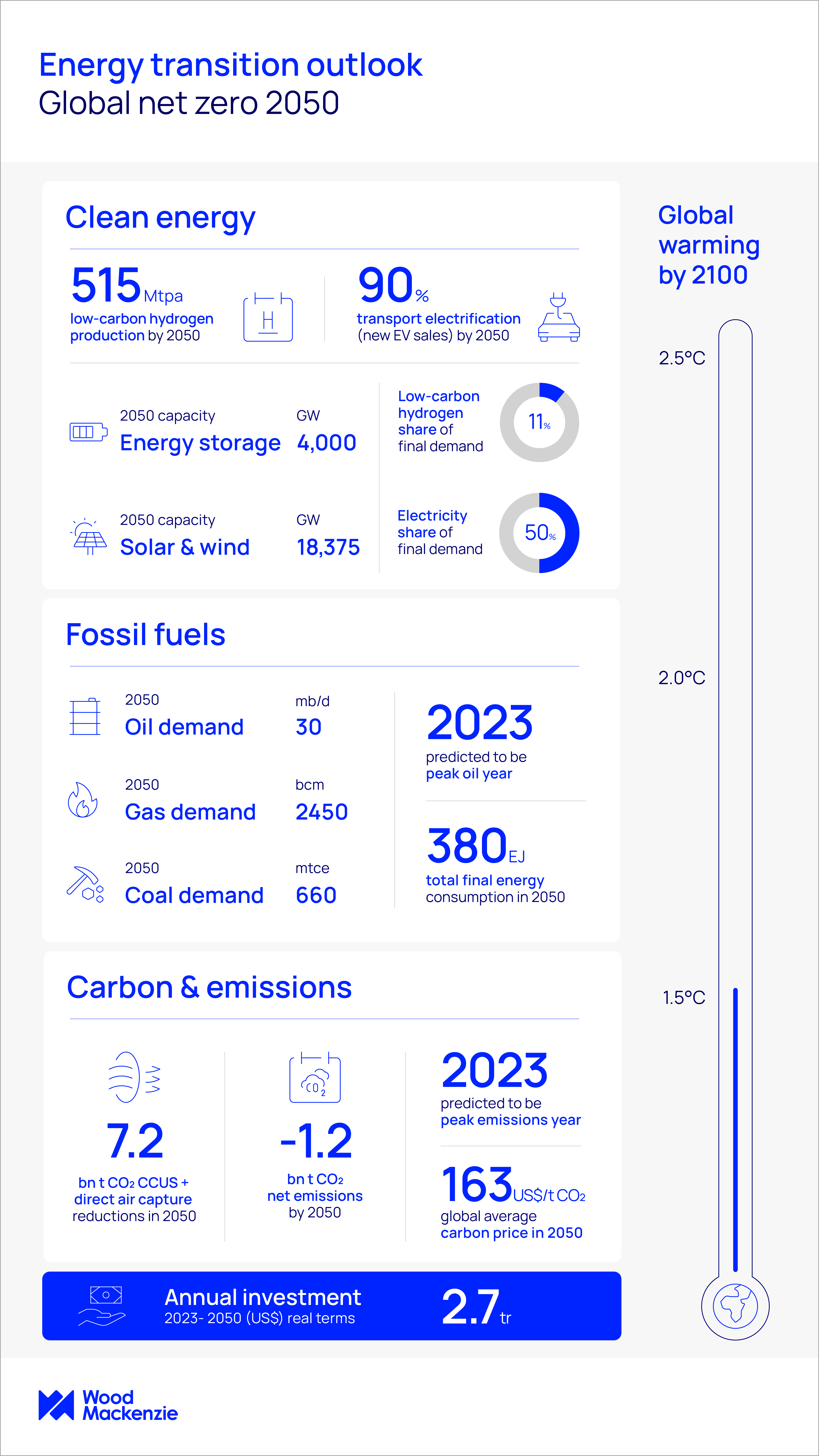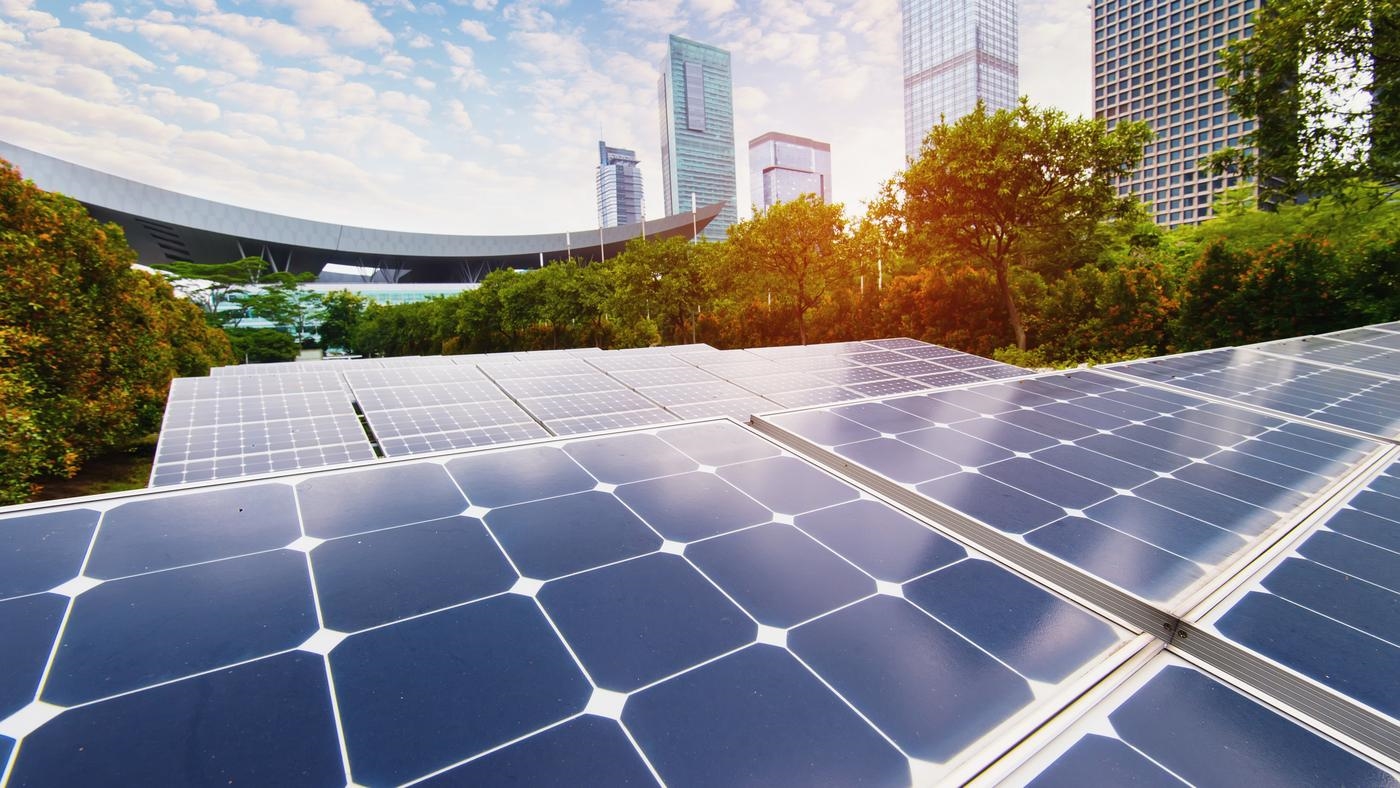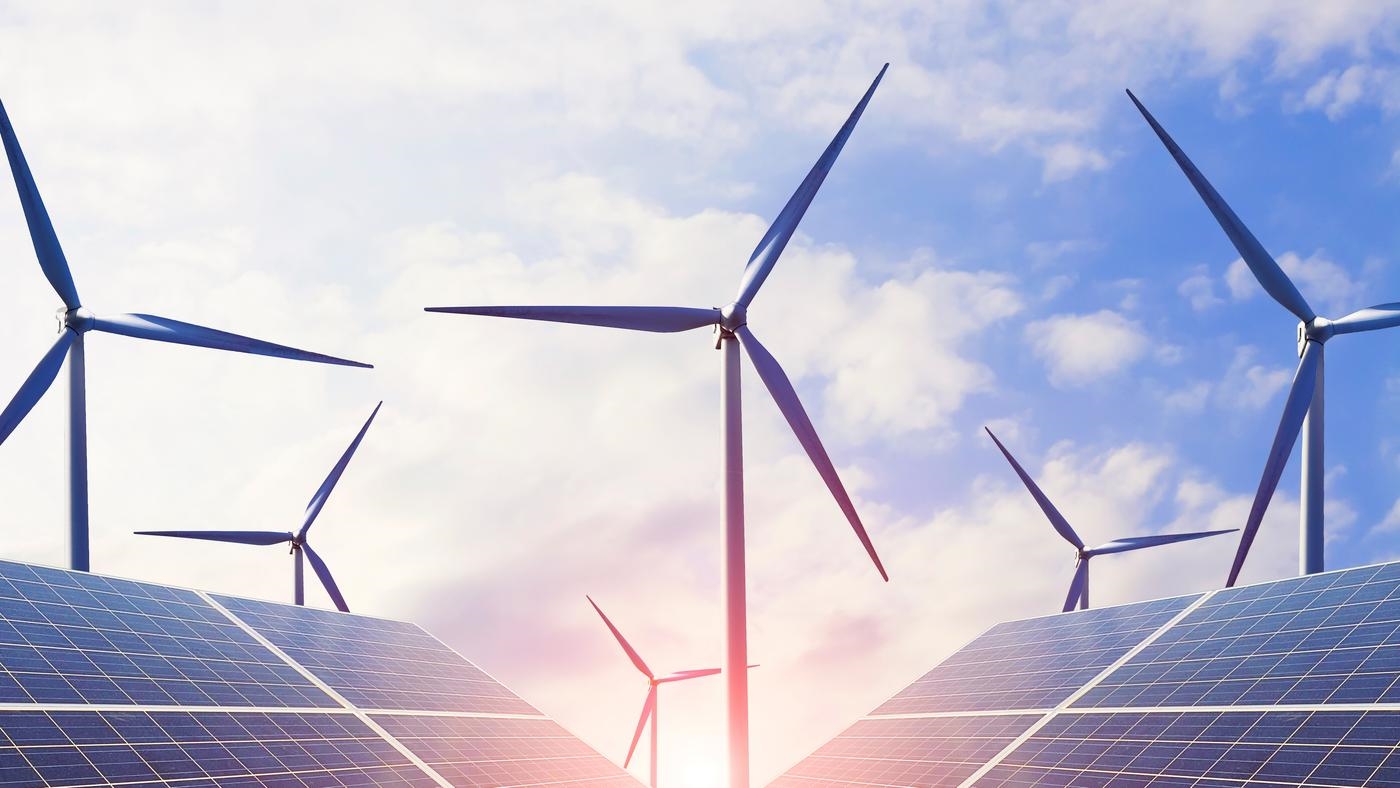
Energy transition outlook: net zero 2050 scenario
Accelerating the energy transition to achieve the Paris Agreement
Download the complimentary executive summary
Trajectory
Trajectory
The scenario is modelled on the remaining carbon budget estimated by the IPICC in its sixth assessment report. At current emissions, the remaining carbon budget would be consumed well before 2030. Therefore, it’s impossible to imagine a pathway to 1.5 ˚C without overshoot.
Outlook
Outlook
This scenario assumes limited overshoot in 2030s and requires carbon capture and removals technologies to bring the world back into the 1.5 ˚C limit by 2100. Several markets – Europe, UK, US, China, Australia, Japan, South Korea, and India – reach net negative in emissions by 2050.
Key features
This scenario assumes that the energy trinity challenges – sovereignty, security, and sustainability – are addressed in time and at the required pace and scale, driven by new technologies and global cooperation.
The scenario calls for immediate action and builds on the game-changing policies of the REPowerEU and the Inflation Reduction Act. Established trade relationships unlock demand for new technologies such as CCUS and low-carbon hydrogen and ammonia.
Cooperation and coordination enter all aspects of economic activity; governments, business and industry and consumers come together and lift the climate game. The world is interconnected, electrified and increasingly circular. Resources are maximised, not wasted.
Fossil fuels share in energy supply falls to around 20% by 2050 from 80% today, primarily driven by rapid electrification supplied by solar, wind, advanced nuclear, geothermal and hydrogen and its derivatives.
Natural gas remains the most resilient hydrocarbon, and its production and consumption are abated by CCUS and nature-based solutions. Oil and gas demand in 2050 reach 30 mb/d and 2,300 bcm, respectively.

Emissions
Globally, energy-related emissions peak in 2023 and fall by around 16% by 2030 and reach net zero by 2047. All except the Middle East, Africa and Southeast Asia reach net zero before 2050.
Investment
In our net zero by 2050 scenario the capital investment required grows to US$75 trillion (2023-50), an average annual capex of US$2.7 trillion. Upstream's share of the investment drops to 7% with power and renewables taking 79% of the overall investment.


